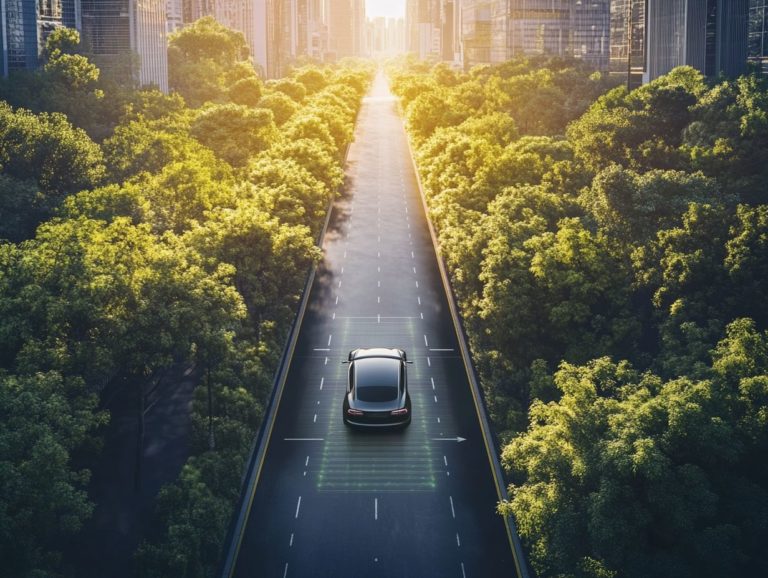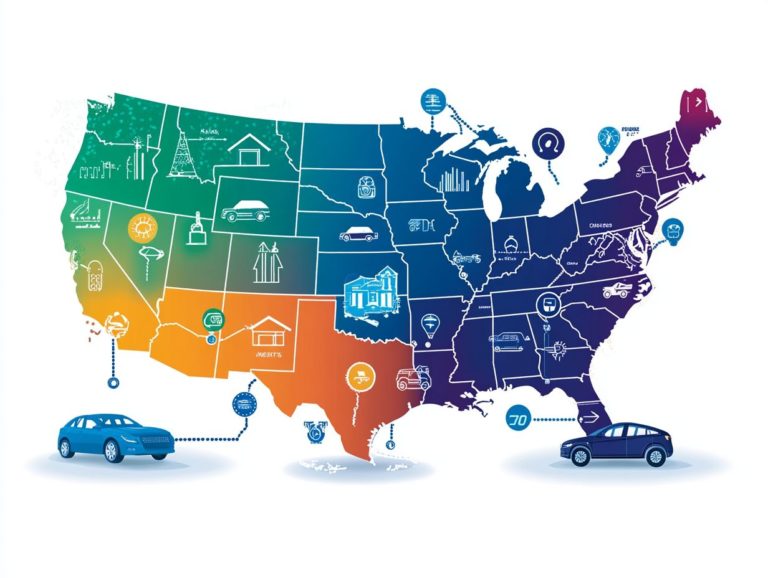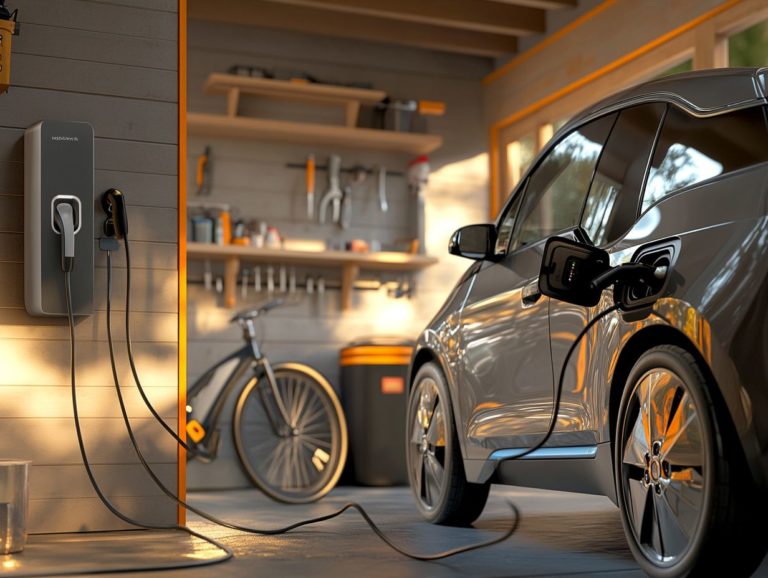How Does Charging Speed Affect EV Usage?
As electric vehicles (EVs) gain traction in the market, understanding charging speed becomes essential for both prospective buyers and current owners.
Charging speed plays a pivotal role in determining the convenience and efficiency of your EV experience. It influences everything from range anxiety to overall ownership expenses.
Let s dive into the exciting world of charging speed! This exploration highlights the key factors that affect it and the latest innovations designed to enhance this crucial element of EV technology.
Embark on this journey to uncover how optimizing charging speed can elevate your driving experience!
Contents
Key Takeaways:
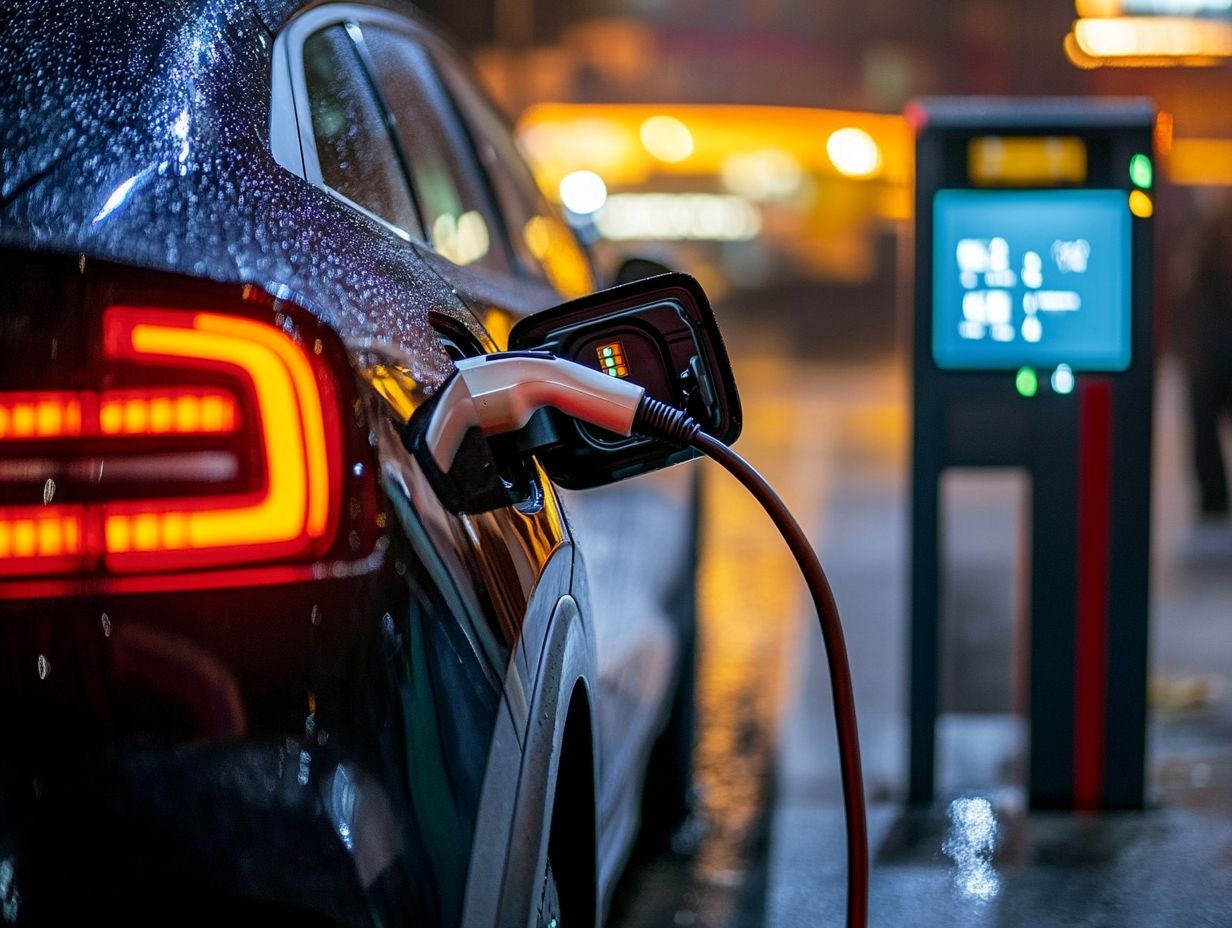
- Charging speed is a key factor in determining the usability of electric vehicles, impacting range anxiety and convenience for the driver.
- Factors affecting charging speed include battery capacity, battery type, charging station type, and external conditions like ambient temperature.
- Technological advancements and infrastructure development can improve charging speed, increasing efficiency and reducing costs for EV users.
Unlocking the Secrets of Charging Speed for an Amazing EV Experience!
Understanding charging speed is essential in the rapidly evolving world of electric vehicles (EVs), especially as fast charging technologies gain traction worldwide. With innovators like Tesla leading the charge in battery management systems and charging infrastructure, the efficiency of charging speeds is crucial for both battery performance and longevity.
As you become increasingly environmentally conscious, rapid charging solutions are increasingly significant. These advancements enable you to enjoy seamless electric mobility without sacrificing vehicle range or battery health.
What is Charging Speed and Why is it Important?
Charging speed is the rate at which your electric vehicle’s battery replenishes. It s a crucial element that can greatly enhance your driving experience and influence how quickly electric cars gain traction in the market. With options like fast charging stations available, understanding various charging speeds enables you to make informed choices about your charging practices and vehicle upkeep.
The importance of charging speed cannot be overstated, especially regarding real-world concerns such as range anxiety. Higher charging speeds allow you to recharge swiftly during brief stops, effectively alleviating the stress often tied to longer journeys.
Different charging speeds also affect battery health. While a rapid charge might be tempting, overusing it could compromise your battery’s longevity. These speeds significantly impact the convenience at public charging stations, where you expect efficient and reliable service.
As the market continues to evolve, being well-versed in charging efficiency relative to battery capacity will become increasingly essential for you as a future EV owner. Understanding charging speed now can enhance your driving experience today!
Factors Affecting Charging Speed
Several factors play a crucial role in determining the charging speed of electric vehicles. These include battery capacity, battery type, the type of charging station, and even external conditions such as ambient temperature.
By understanding these variables, you can optimize your charging habits and implement effective battery management systems. This approach not only enhances battery longevity but also improves overall vehicle performance, ensuring that you get the most out of your electric vehicle experience.
Battery Capacity and Type
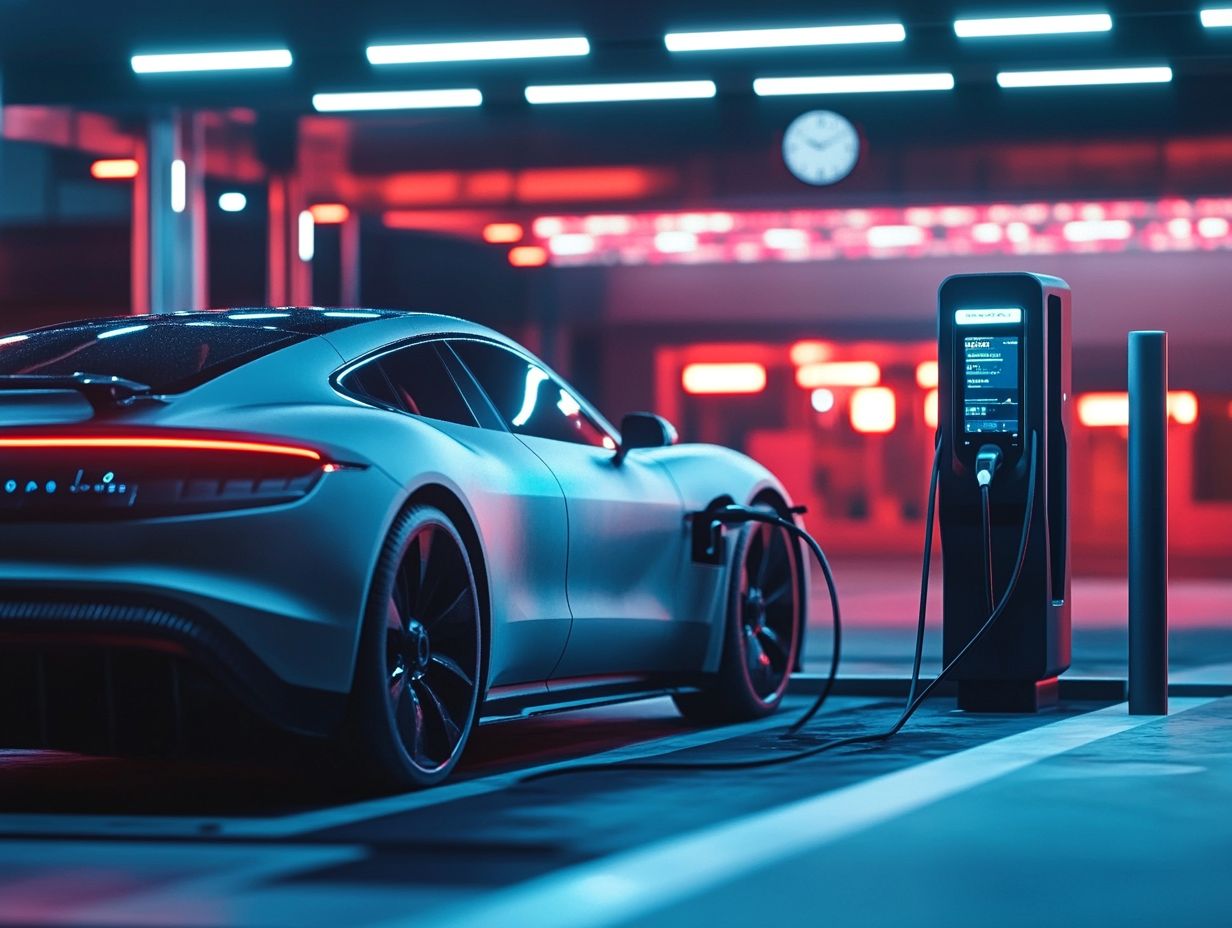
The battery capacity and type are crucial factors in determining the charging speed of electric vehicles. Lithium-ion batteries are particularly noteworthy due to their impressive energy density and efficiency. By exploring battery chemistry, you can understand how factors like state of charge and thermal management or how heat is controlled in the battery affect overall performance.
Lithium-ion batteries are celebrated for their swift charging capabilities, but performance can vary based on design and usage. The efficiency of these batteries directly influences how quickly your vehicle reaches a full charge, which is essential for minimizing downtime.
Larger battery capacities mean longer vehicle ranges, allowing you to embark on extended journeys without the hassle of frequent recharging.
Monitoring systems keep you informed about battery health, guarding against overcharging and excessive heat buildup. These tips help you make smarter choices that extend the lifespan and maintain optimal health of your vehicle’s battery.
Charging Station Type and Capacity
The type and capacity of charging stations greatly affect the charging speed you experience as an electric vehicle owner. With level 1, level 2, and level 3 chargers varying significantly in power output and efficiency, understanding these differences can help you optimize charging times to fit your needs.
Level 1 chargers deliver around 1.4 kW, making them perfect for home use, especially when your vehicle can sit parked for long periods, like overnight. Level 2 chargers provide between 3.3 to 19.2 kW, striking a balance between speed and accessibility. You ll often find these in residential and commercial locations, allowing for quicker charges during short stopovers.
Level 3 chargers, or DC fast chargers, can deliver anywhere from 50 kW to over 800 kW. These are designed for extensive travels, reducing your charging time to mere minutes.
Public charging stations play a crucial role in this ecosystem. They fill gaps in the infrastructure and promote electric vehicle adoption by making the charging experience as seamless and convenient as refueling a traditional vehicle.
Impact of Charging Speed on EV Usage
The charging speed of electric vehicles significantly influences your overall experience. It directly affects range anxiety, convenience, cost considerations, and the efficiency of your vehicle’s operation. To understand this better, explore common charging issues with EVs.
As electric mobility evolves, understanding how charging speed impacts both vehicle range and battery degradation will empower you to make informed choices that enhance your driving experience.
Range Anxiety and Convenience
Range anxiety is a major concern for many electric vehicle users, often stemming from worries about charging speed and the availability of fast charging stations. Addressing this issue through robust charging infrastructure can greatly enhance your convenience, allowing you to embrace the benefits of electric mobility without the nagging worry about battery life or range.
This psychological barrier significantly influences your decision to adopt an electric vehicle. Research indicates that nearly 60% of potential buyers hesitate due to fears of finding charging stations, especially during long journeys.
For instance, a recent survey revealed that over 40% of respondents would choose a gasoline vehicle over an electric one simply for the ease of refueling. Interestingly, cities with a higher density of fast chargers tend to enjoy increased EV ownership rates. In Los Angeles, a 2019 initiative to expand fast charging locations resulted in a remarkable 25% surge in electric vehicles on the road within just one year.
These real-world examples demonstrate the crucial connection between charging speed, infrastructure, and the growing acceptance of electric vehicles.
Cost and Efficiency
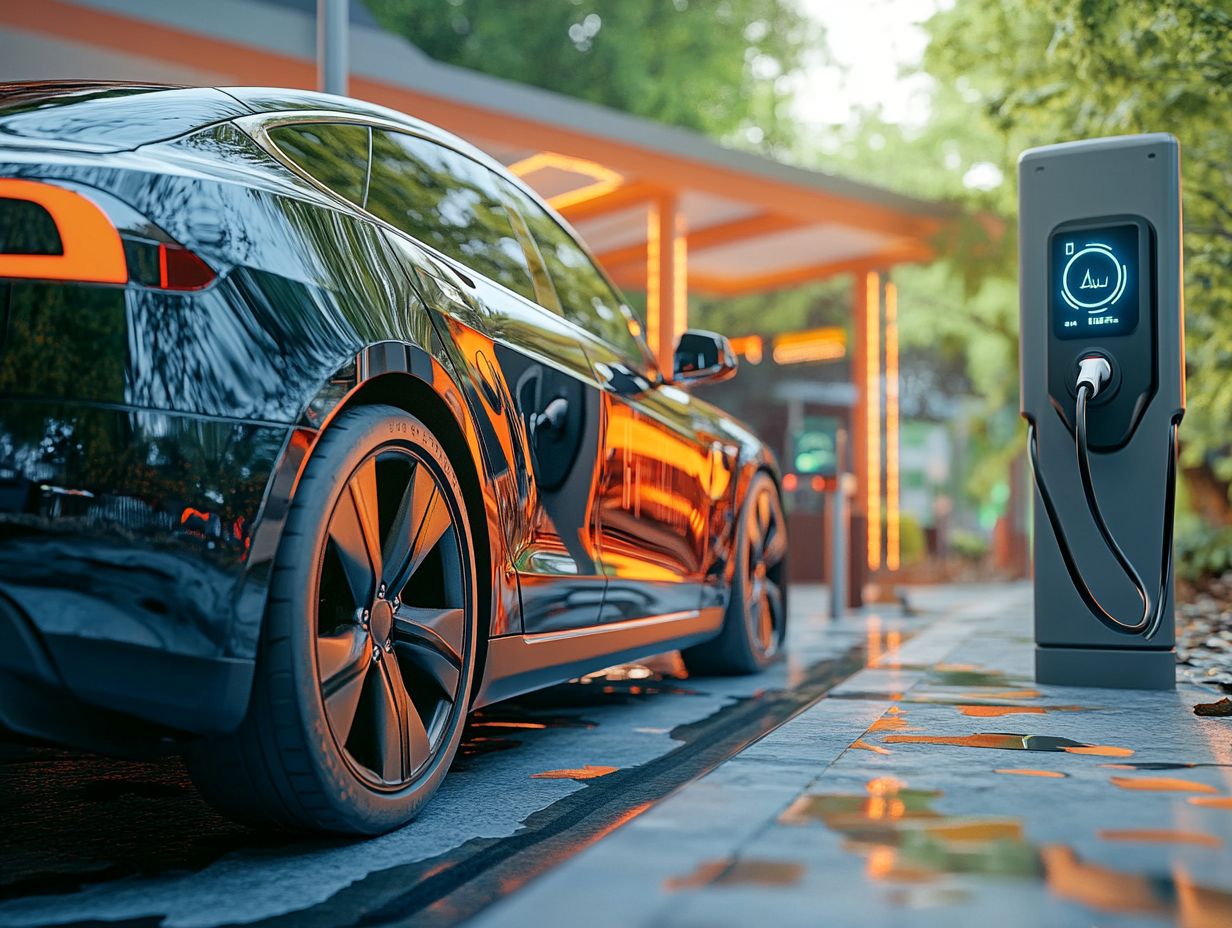
The relationship between charging speed and cost is crucial for electric vehicle users. Faster charging options often come with a higher price tag but may lead to greater overall efficiency.
Understanding this balance is essential for you as an EV owner, especially if you aim to optimize your charging habits while keeping an eye on your budget and the broader charging infrastructure.
Higher charging speeds can offer convenience, but they might also come with extra expenses that could impact your overall ownership costs if you re not careful. On the flip side, slower charging methods might lead to loss of driving distance, making it vital for you to choose the right charging plan to avoid unexpected costs.
Fortunately, you can find various financial incentives and programs that encourage the use of fast charging solutions, helping to ease those initial expenses. By selecting optimal times for charging or employing smart charging methods, you can achieve significant efficiency gains, translating into lower operational costs and even extending the lifespan of your vehicle.
Improving Charging Speed for EVs
Improving charging speed for electric vehicles is a complex objective that necessitates advancements across technology, infrastructure development, and innovations within battery systems. It s essential to stay updated on the latest advancements!
This ensures that charging solutions not only meet consumer demands but also address the increasing necessity for efficient energy storage.
Technological Advancements
Technological advancements in the electric vehicle sector have ushered in remarkable improvements in charging speed, particularly through enhanced battery management systems and the adoption of DC fast charging solutions. These innovations not only amplify energy storage capabilities but also directly impact battery performance and longevity.
Consider the recent studies indicating that solid-state batteries, which employ a solid electrolyte rather than a liquid one, can potentially double charging speeds while mitigating the risk of overheating.
Advancements in charging infrastructure, such as ultra-fast charging stations capable of delivering 350 kW of power, are now becoming common in urban areas and along major highways, significantly slashing wait times for drivers.
Research from esteemed institutions like the National Renewable Energy Laboratory underscores the effectiveness of these technologies, revealing that the integration of advanced battery systems and cutting-edge charging points can facilitate a seamless transition to electric mobility. This transition is transforming electric vehicles into a more accessible and practical choice for everyday users.
Infrastructure Development
The development of a robust charging infrastructure is essential for enhancing the charging speeds available to you as an electric vehicle user, particularly through the establishment of public charging stations equipped with fast charging capabilities. As the electric vehicle market expands, the necessity for accessible and efficient charging solutions becomes increasingly vital.
This evolution presents a variety of charging station types, ranging from Level 2 chargers that you might find in residential settings to ultra-fast DC charging stations strategically positioned along highways. These diverse options cater to your varying charging needs and make longer journeys more feasible.
Both governments and private entities are beginning to grasp the importance of investing in this infrastructure, implementing policies and incentives that foster fast charging networks. These initiatives are poised to significantly accelerate your adoption of electric vehicles, making them a more convenient choice for your everyday use and easing any range anxiety you may have as a potential user.
Frequently Asked Questions
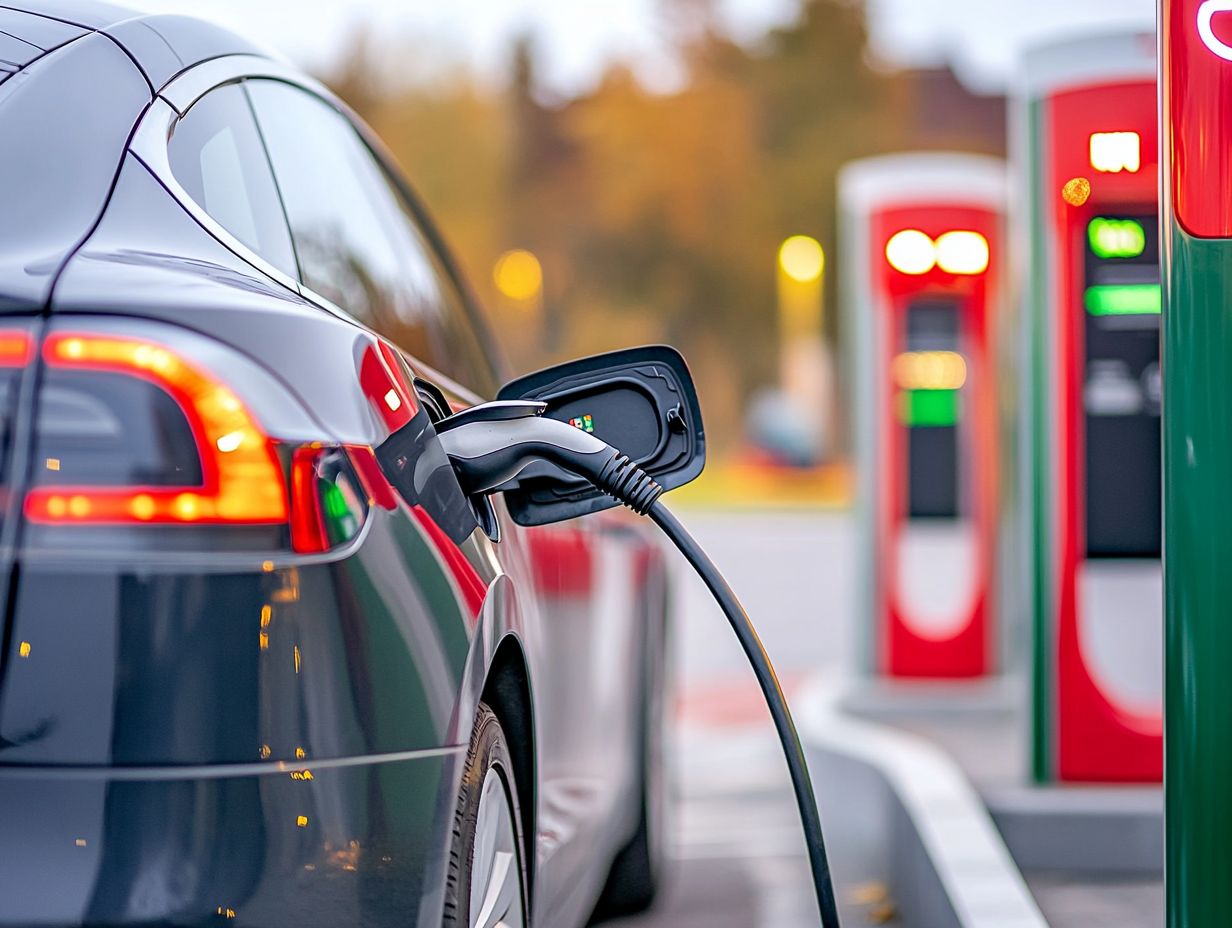
In this section, we address some common questions regarding electric vehicle charging speeds and efficiency.
How does charging speed affect EV usage?
Charging speed can make or break your EV experience! It decides how quickly you can get back on the road.
What is the average charging speed for EVs?
Typically, you can gain about 22 miles of range for every hour of charging. This may change based on your car model and the charging station you use.
Can charging speed affect the range of an EV?
Absolutely! Faster charging means you can add more range in less time.
How does the type of charging station impact charging speed for EVs?
The type of charging station matters! Level 1 chargers are the slowest and are usually at home, while Level 2 and DC fast chargers are much quicker and commonly found in public spaces.
Does cold weather affect charging speed for EVs?
Yes, cold weather can slow down charging speeds. When it s chilly, the battery’s efficiency drops and charging may take longer.
How can I improve the charging speed for my EV?
You can boost your charging speed by investing in a Level 2 or DC fast charger, which are much faster than Level 1 chargers. Also, try charging your EV during off-peak hours to maximize speed.

